
The US dollar weakened against major world currencies on Monday.
Investors are estimating the probability of worsening of the situation in the world economy after central banks of several countries raised interest rates last week, Trading Economics notes.
In addition, Friday’s published statistical data had a negative impact on the value of the U.S. currency.
The Purchasing Managers Index (PMI) in the U.S. manufacturing sector fell to 46.3 points in June from 48.4 points a month earlier, according to preliminary data from S&P Global, which calculates the index. This is the lowest level in six months. The decline in the indicator came as a surprise to analysts, who had forecast an average rise to 48.5 points.
The services PMI fell to 54.1 points this month from 54.9 points in May, with the composite reading down to 53 points from 54.3 points.
The euro is trading near $1.0911 in the morning versus $1.0895 in the previous session.
The value of the single European currency is now around 156.38 yen compared to 156.59 yen on Friday. The dollar exchange rate is 143.36 yen versus 143.73 yen at the end of the previous trading day.
The DXY index, which shows the value of the U.S. dollar against six major world currencies, was down 0.18% in trading. The WSJ Dollar, which tracks the movement of the dollar against 16 currencies, declined 0.09%.
The pound traded at $1.2733 on Monday, compared to $1.2714 at the close of previous trading. The euro is unchanged at £0.8568.
Analysts at Mitsubishi UFG forecast the British currency could rise to $1.3 this year.
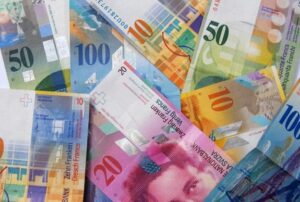
The Swiss franc has gained about 4 percent against the U.S. dollar since late February, the best performance among G10 currencies.
Traders in recent weeks have started giving optimistic forecasts about the franc, which has not been seen since September 2021, Bloomberg noted. These changes are due to a projected divergence in monetary policy between the Swiss National Bank and central banks in Europe and China.
The sharp slowdown in economic growth in the euro zone and China strengthens analysts’ opinions that central banks will move to soften monetary policy. Experts also expect similar moves from the Federal Reserve in the not-too-distant future, although mixed economic data do not rule out the possibility of another prime rate hike before then.
“We expect the Swiss franc to rise in line with a multi-year trend,” said Thomas Fluri, head of currency research at UBS Wealth Management. He expects the currency to strengthen in the medium to long term because of the low price pressure in Switzerland and the fact that the country’s central bank is “convinced of the need to fight even this small inflation.” Moreover, “there are also many opportunities to repatriate money that was left outside the country during the period of negative interest rates,” the expert believes.
The franc also remains a safe haven for nervous investors amid worsening geopolitical tensions between the U.S. and China, the agency noted.
The Swiss national currency, like gold, shows good results in the periods when central banks’ monetary policy is stimulating. The franc appreciated 10% during the 2001-2002 cycle of rate cuts by the Fed and the ECB. At the beginning of the 2007-2008 financial crisis it gained 13%. When the Fed lowered rates in 2019-2020, the franc appreciated about 7%.
Long-term estimates of the franc “don’t look overstated at all” after accounting for differences in inflation with other countries, JPMorgan Chase analysts said. They predict a gradual strengthening of its exchange rate by March 2024 by more than 5% against the dollar and more than 4% against the euro.
After fears regarding the US debt ceiling are removed, the franc may weaken against the US national currency by 1-2%, experts say. However, they think this is only temporary negative factor that “is not a problem for our “bullish” strategic view of the franc.
The dollar is trading at 0.9067 francs and the euro at 0.9697 francs on Tuesday.
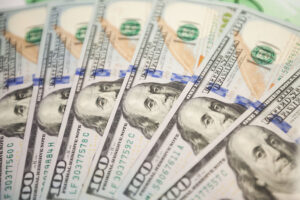
The ICE-calculated index showing the U.S. dollar’s performance against six currencies (euro, Swiss franc, yen, Canadian dollar, pound sterling and Swedish krona) is up 0.25% in the morning session.
The euro/dollar pair is trading at $1.0834 as of 9:20 a.m. Q, versus $1.0847 at the close of Tuesday’s session, with the euro losing about 0.1%.
The pound sterling is down 0.15% and is trading at $1.2322 versus $1.2342 at the close of last session.
The dollar-yen exchange rate jumped 0.8% to 131.96 yen against 130.88 yen the day before.
The active growth of the dollar against the yen was due to a decrease in demand for protective assets, including the Japanese currency, on fears weakening on the expansion of the banking crisis and its impact on the global economy, writes Trading Economics.
The Australian dollar fell 0.5% against the U.S. dollar to $0.6676.
As reported, inflation in Australia slowed to 6.8% in February from January’s 7.4%. Analysts had expected a more moderate slowdown to 7.1%. The February figure was the lowest since last June.
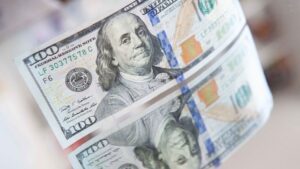
The U.S. dollar is actively declining against most world currencies on Monday morning as traders react to news about the bankruptcy of two U.S. banks.
The ICE-calculated index showing the U.S. dollar’s performance against six currencies (euro, Swiss franc, yen, Canadian dollar, pound sterling and Swedish krona) fell 0.7% during this morning’s session.
The euro/dollar pair is trading at $1.0720 as of 8:33 a.m. Q, versus $1.0642 at the close of last Friday’s session, with the euro adding about 0.73%.
The pound sterling is up 0.65% and is trading at $1.2114 versus $1.2034 at the close of last session.
The dollar-yen exchange rate is down 0.45% to trade at 134.40 yen.
As reported, the U.S. bank Silicon Valley Bank has come under the management of the Federal Deposit Insurance Corporation (FDIC). The FDIC will sell the assets of Silicon Valley Bank, which will allow payments on uninsured deposits. The bank’s bankruptcy was the largest since the 2008 financial crisis.
Regulators also shut down Signature Bank, a smaller New York bank that was popular with cryptocurrency holders.
Investors fear the problems at U.S. banks could spill over to the global financial industry, MarketWatch wrote. However, statements by regulators about their readiness to support the banking sector, including through the provision of concessional financing, have somewhat calmed market participants.
Also traders believe that against the background of problems in the financial sphere the Federal Reserve may soften its approach to the monetary policy, having made the decision to increase the key interest rate by 25 basic points at the March meeting instead of raising it by 50 bps.
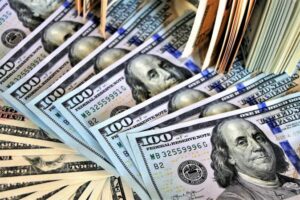
The U.S. dollar was declining against major world currencies in trading on Thursday.
The DXY index, which shows the U.S. dollar value against six major world currencies, fell 0.08% to 105.57 points. A day earlier it had risen to 105.88 points, the highest level since December 1, on hawkish statements from Federal Reserve (Fed) chief Jerome Powell, MarketWatch notes.
He said that Fed management has not yet decided how much it will raise the benchmark interest rate at the March meeting. That will depend on statistical data on inflation and employment, which the Fed has yet to assess. Powell said the Central Bank is ready to accelerate the pace of monetary tightening if U.S. economic activity does not begin to slow. That said, the final rate level is likely to be higher than previously thought, he said.
Prime rate futures prices point to the likelihood of a 50 basis point hike at the end of the March meeting, according to Trading Economics.
The euro is trading at $1.0553 in the morning versus $1.0544 at the end of last session.
The value of the single European currency is now around 144.40 yen compared to 144.82 yen on Wednesday. The dollar exchange rate is 136.81 yen against 137.35 yen at the end of the previous trading day.
The WSJ Dollar indicator, which tracks the dollar’s movement against 16 currencies, declined 0.13%.
The pound is trading at $1.1855 compared to $1.1844 on the previous trading day. The euro is at 0.8901 against 0.8902 a day earlier.
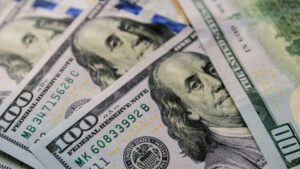
The U.S. dollar is falling moderately against the euro and the yen on Monday morning, while strengthening weakly against the pound sterling.
The ICE-calculated index, which shows the U.S. dollar’s dynamics against six currencies (euro, Swiss franc, yen, Canadian dollar, pound sterling and Swedish krona), declined 0.1% during the morning session.
The euro/dollar pair was trading at $1.0646 as of 8:20 a.m. Q, versus $1.0635 at the close of last Friday’s session, with the euro adding about 0.1%.
The pound sterling is down 0.1% and is trading at $1.2031 versus $1.2043 at the close of last session.
The dollar-yen exchange rate is down 0.1% and trades at 135.76 yen.
Foreign exchange market participants are assessing the statements of the Federal Reserve (Fed) representatives, trying to predict the future trajectory of interest rates.
For example, Mary Daley, head of the Federal Reserve Bank of San Francisco, said last weekend that the Fed rate could stay high for a long time because of sustained inflation.
“To put a period of high inflation behind us, we will probably need more monetary tightening to persist for longer,” she said during a speech at Princeton University.
The Fed’s next meeting is March 21-22.
Meanwhile, the exchange rate of the yuan traded in mainland China is 6.9102/$1, compared with 6.9074/$1 at the close of the previous session.
As reported, the Chinese government set the target growth rate for the country’s economy this year at about 5%. Meanwhile, many economists expected the target to be more ambitious.
Analysts at Swiss bank UBS raised their forecast for Chinese economic growth in 2023 to 5.4 percent from the previously expected 4.9 percent. The growth estimate for 2024 was raised to 5.2% from 4.8%.
EURO, pound, U.S. dollar, yen